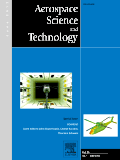
Aerospace Science and Technology
metrics 2024
Exploring the Frontiers of Aerospace Technology
Introduction
Aerospace Science and Technology, published by ELSEVIER FRANCE-EDITIONS SCIENTIFIQUES MEDICALES ELSEVIER, is a leading journal in the field of aerospace engineering, boasting an impressive 2023 Q1 ranking and a significant position in the Scopus Ranks, where it stands at Rank #7 out of 153 in the Engineering - Aerospace Engineering category, reflecting its credibility and impact with a 95th percentile ranking. Since its inception in 1997, this journal has provided a robust platform for the dissemination of pioneering research and advancements in aerospace technology, focusing on innovative methodologies and applications in the aerospace sector. With a commitment to open access, researchers, professionals, and students can easily engage with cutting-edge findings that drive the industry forward. The journal not only seeks to expand knowledge but also aims to foster collaboration among scholars across the globe, making it an essential resource for anyone looking to stay at the forefront of aerospace innovation. For more information, visit its website or refer to its dedicated address at 65 Rue Camille Desmoulins, CS50083, 92442 Issy-Les-Moulineaux, France.
Metrics 2024
 1.49
1.49 5.00
5.00 4.80
4.80 107
107Metrics History
Rank 2024
Scopus
IF (Web Of Science)
JCI (Web Of Science)
Quartile History
Similar Journals

PROGRESS IN AEROSPACE SCIENCES
Delivering premier research for the aerospace industry.PROGRESS IN AEROSPACE SCIENCES is a prestigious journal published by PERGAMON-ELSEVIER SCIENCE LTD, recognized as a leading platform in the field of aerospace engineering, mechanical engineering, and mechanics of materials. With an impressive history dating back to 1961, the journal covers a wide spectrum of topics pivotal to advancing aerospace technology and innovation. Its recent ranking as Q1 in multiple engineering categories underscores its significance, ranking #1 in Aerospace Engineering and placing within the top 20 percentile in both Mechanical Engineering and Mechanics of Materials, according to Scopus assessments. Researchers, professionals, and students looking to engage with high-impact research will find PROGRESS IN AEROSPACE SCIENCES an invaluable resource, offering insights into cutting-edge developments and methodologies. Although it does not operate under an open-access model, the journal upholds rigorous peer-review standards, ensuring that the published content meets the highest academic integrity. Situated in the United Kingdom, it plays a critical role in fostering international collaboration and knowledge-sharing in the aerospace sector.

JOURNAL OF THE AMERICAN HELICOPTER SOCIETY
Elevating Knowledge in Rotary-Wing Innovation.The Journal of the American Helicopter Society, published by the American Helicopter Society Inc., serves as a leading platform for innovative research in aerospace engineering, mechanical engineering, and materials science. With its ISSN 0002-8711 and E-ISSN 2161-6027, this esteemed journal has been disseminating pivotal findings since 1969 and continues to capture cutting-edge advancements in the field. The journal is distinguished by its position in the top quartile (Q1) for Aerospace Engineering and Mechanics of Materials, and Q2 for Materials Science (miscellaneous), reflecting its rigorous standards and significant influence on both academia and industry. Researchers, professionals, and students benefit from access to comprehensive studies, case analyses, and reviews, all aimed at enhancing knowledge and fostering innovation in rotary-wing aircraft technologies. As the field continues to evolve through new challenges and innovations, the Journal of the American Helicopter Society remains a vital resource for those committed to advancing helicopter design, operation, and safety.

Aviation
Navigating the skies of knowledge in aviation studies.Aviation, published by Vilnius Gediminas Technical University, is a leading open-access journal dedicated to the dynamic field of aerospace engineering, with an ISSN of 1648-7788 and E-ISSN of 1822-4180. Established in 2004 and set to converge in 2024, this journal aims to disseminate high-quality research that advances the understanding and application of aerospace technology. With an impact factor reflective of its contribution to the discipline, Aviation ranks at Q4 in the Aerospace Engineering category and occupies the 80th position out of 153 in Scopus, highlighting its growing significance among scholarly publications. By providing free access to its content since 2018, the journal enhances its reach and encourages collaborative efforts in the academic community, catering to researchers, professionals, and students eager to explore innovative studies and findings within aerospace engineering. Based in Lithuania, this journal serves as a vital resource for those aiming to contribute to the future of aviation.
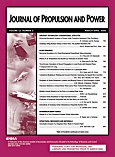
JOURNAL OF PROPULSION AND POWER
Elevating Research in Propulsion and Power TechnologiesJOURNAL OF PROPULSION AND POWER, published by the American Institute of Aeronautics and Astronautics, is a premier peer-reviewed journal dedicated to the advancement of knowledge in the fields of aerospace engineering, mechanical engineering, and fuel technology. With an impressive impact factor and ranked in the Q1 and Q2 categories for various relevant fields, the journal serves as a vital resource for researchers, professionals, and students alike who are looking to stay abreast of the latest innovations and breakthroughs in propulsion systems and power generation methodologies. Established in 1985, the journal covers a wide range of topics, ensuring a comprehensive understanding of propulsion technologies from atmospheric to space applications. Its robust Scopus rankings highlight its significance in the academic community, establishing it as a leading forum for sharing pivotal research findings and fostering collaborative dialogues that drive the aerospace industry forward. Located in Reston, Virginia, the journal does not currently offer open access options, yet it remains accessible to a vast audience via academic institutions and libraries. As we move further into the 21st century, the JOURNAL OF PROPULSION AND POWER continues to be an indispensable tool for the exploration and evolution of propulsion and power systems.

Journal of Aeronautics Astronautics and Aviation
Pioneering Insights in the World of Flight and BeyondJournal of Aeronautics Astronautics and Aviation, published by the Aeronautical & Astronautical Society Republic of China, is a premier scholarly journal dedicated to advancing knowledge in the dynamic fields of aerospace engineering and space sciences. Operating under the ISSN 1990-7710, this journal plays a pivotal role in disseminating innovative research and practice-oriented studies that address both theoretical and applicative aspects of aeronautics and astronautics. With an impressive history spanning from 2006 to 2024, the journal has established itself as a valuable resource for researchers, professionals, and students alike, featuring contributions that reflect the latest developments and trends within the industry. In the latest rankings, it holds a Q3 classification in Aerospace Engineering and Q4 in Space and Planetary Science, indicating its growing influence despite its niche scope. With an open access model that facilitates widespread readership, the Journal of Aeronautics Astronautics and Aviation strives to foster collaboration and knowledge sharing in these ever-evolving scientific domains.

Drone Systems and Applications
Charting New Territories in Drone SystemsDrone Systems and Applications is an innovative open-access journal published by Canadian Science Publishing that commenced its journey in 2022 and is set to converge in 2024. With a keen focus on the interdisciplinary domains of Aerospace Engineering, Automotive Engineering, Control and Optimization, and Computer Science Applications, this journal seeks to advance the frontiers of knowledge surrounding drone technology and its myriad applications. Achieving notable rankings within various engineering and computer science categories, including being placed in the Q2 quartile in Automotive Engineering and Q3 quartiles in several other relevant fields, the journal exemplifies scholarly excellence and research impact. As an open-access publication, it ensures that cutting-edge research is readily available to a global audience, fostering progress in drone systems across multiple industries. For researchers, professionals, and students alike, Drone Systems and Applications serves as a vital platform for disseminating impactful findings and promoting collaborative advancements in this rapidly evolving field.

International Journal of Aeronautical and Space Sciences
Advancing the Frontiers of Aerospace ResearchThe International Journal of Aeronautical and Space Sciences, published by Springer, is a prominent platform dedicated to advancing research and innovation in the fields of Aerospace Engineering, Control and Systems Engineering, Electrical and Electronic Engineering, and Materials Science. With an ISSN of 2093-274X and an E-ISSN of 2093-2480, the journal has established itself as a vital resource since its inception in 2011, currently offering insights that span a wide range of contemporary challenges and technological advancements in aeronautics and space exploration. Ranking in the Q2 category across multiple disciplines, including Aerospace and Control Engineering, signifies its recognized impact and quality within the academic community. Although not an open-access journal, it remains accessible to researchers, professionals, and students seeking to enhance their understanding of complex aerospace systems and their applications. The journal’s commitment to publishing high-quality research makes it indispensable for those aiming to contribute to, or stay informed about, the evolving landscape of aerospace technology.
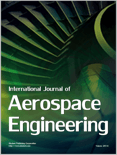
International Journal of Aerospace Engineering
Pioneering Innovations in Aerospace EngineeringThe International Journal of Aerospace Engineering, published by HINDAWI LTD, stands at the forefront of innovation and research in the field of aerospace engineering. With an impact factor reflecting its contributions to the discipline and classified in Quartile 3 (Q3) for the year 2023, this journal provides a platform for high-quality, peer-reviewed articles that delve into advancements and challenges in aerospace technology and applications. Since its inception in 2008, the journal has embraced an Open Access model, promoting unrestricted dissemination of research findings to foster collaboration and knowledge sharing among researchers, professionals, and academia. The journal covers a broad spectrum of topics, aiming to enhance understanding and give insight into aerospace engineering's multifaceted aspects. With its coverage in the Scopus database, ranking 71 out of 153 in the aerospace engineering category, the journal is a valuable resource for those engaged in this dynamic field, ensuring that high-impact research receives the visibility it deserves.
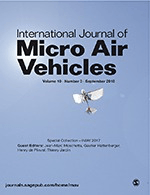
International Journal of Micro Air Vehicles
Pioneering the Future of MAV TechnologyThe International Journal of Micro Air Vehicles, published by SAGE Publications Ltd, stands as a pioneering platform for cutting-edge research in the rapidly evolving field of micro air vehicle (MAV) technology. With an ISSN of 1756-8293 and an E-ISSN of 1756-8307, this journal caters to a diverse readership, including aerospace engineers, researchers, and industry professionals who are at the forefront of innovation in aerospace engineering. It holds a commendable position within the Q3 category of Aerospace Engineering for 2023 and is ranked 65th out of 153 in Scopus, placing it in the 57th percentile among its peers. As a vital resource since its inception in 2010, the journal emphasizes advancements in design, performance, and applications of MAVs, while facilitating knowledge sharing and collaboration across disciplines. Although it operates on a subscription model, the journal ensures accessibility of pivotal research findings for professionals and scholars alike, aiming to shape the future of aerospace applications through rigorous academic inquiry.
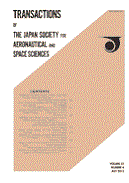
TRANSACTIONS OF THE JAPAN SOCIETY FOR AERONAUTICAL AND SPACE SCIENCES
Charting New Paths in Aeronautical ResearchTRANSACTIONS OF THE JAPAN SOCIETY FOR AERONAUTICAL AND SPACE SCIENCES is a distinguished journal published by the Japan Society for Aeronautical and Space Sciences, focusing on the latest advancements and research in the fields of aerospace engineering and space and planetary science. With a broad range covering theoretical studies, practical applications, and experimental research, this journal serves as a vital platform for researchers, professionals, and students keen to explore the intricacies of aeronautics and space technologies. Although currently closed to open access, the journal maintains a significant presence in the academic community, boasting a 2023 Scopus ranking of Q3 in both of its respective fields and offering insights that contribute to ongoing discussions and innovations in aerospace. Since its inception in 1969 and with publications extending to 2024, the journal not only reflects the evolving landscape of aeronautics and space sciences but also encourages discourse that paves the way for future breakthroughs. For your engagement and contributions to this dynamic field, the TRANSACTIONS OF THE JAPAN SOCIETY FOR AERONAUTICAL AND SPACE SCIENCES stands as an essential resource.